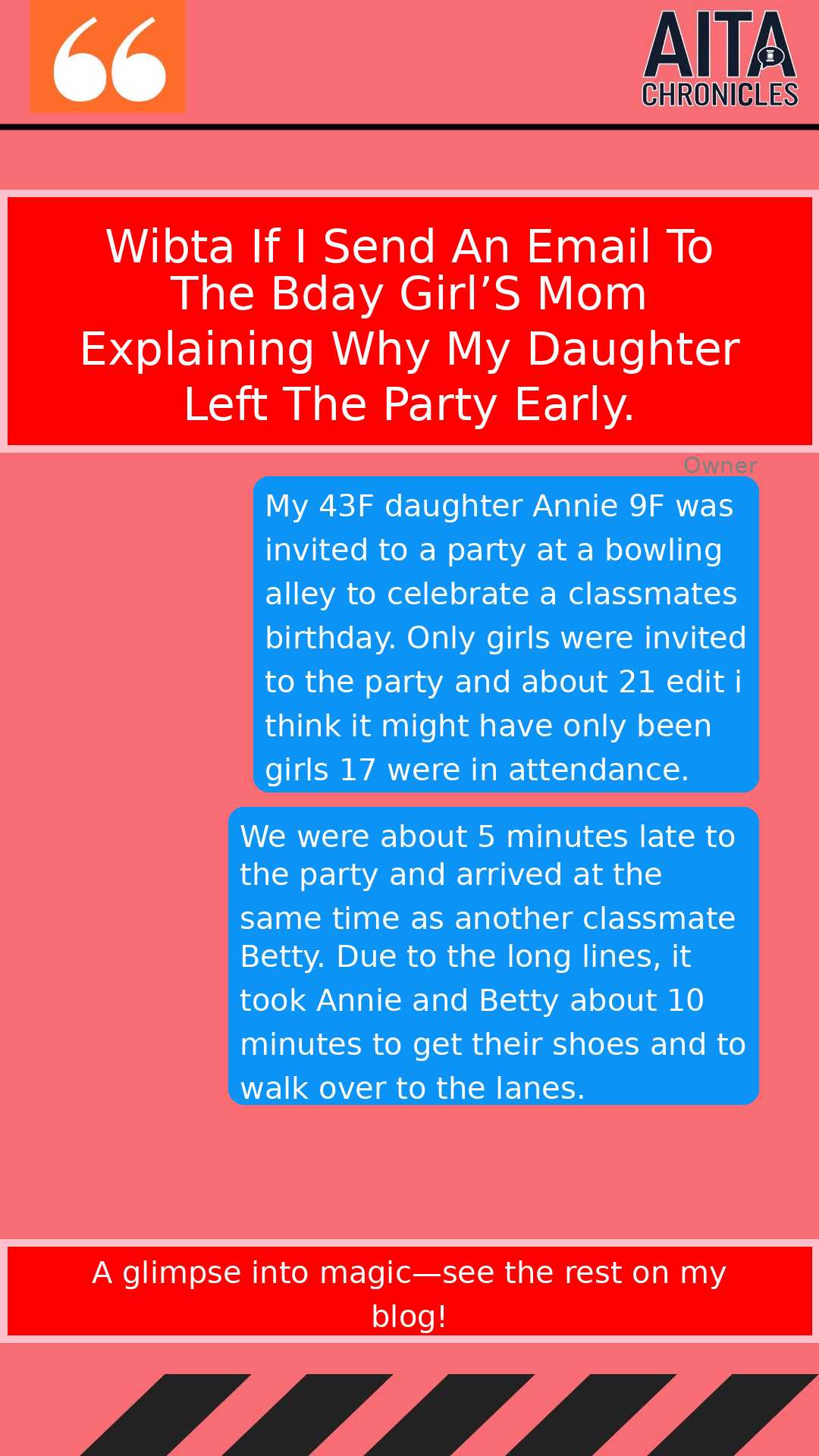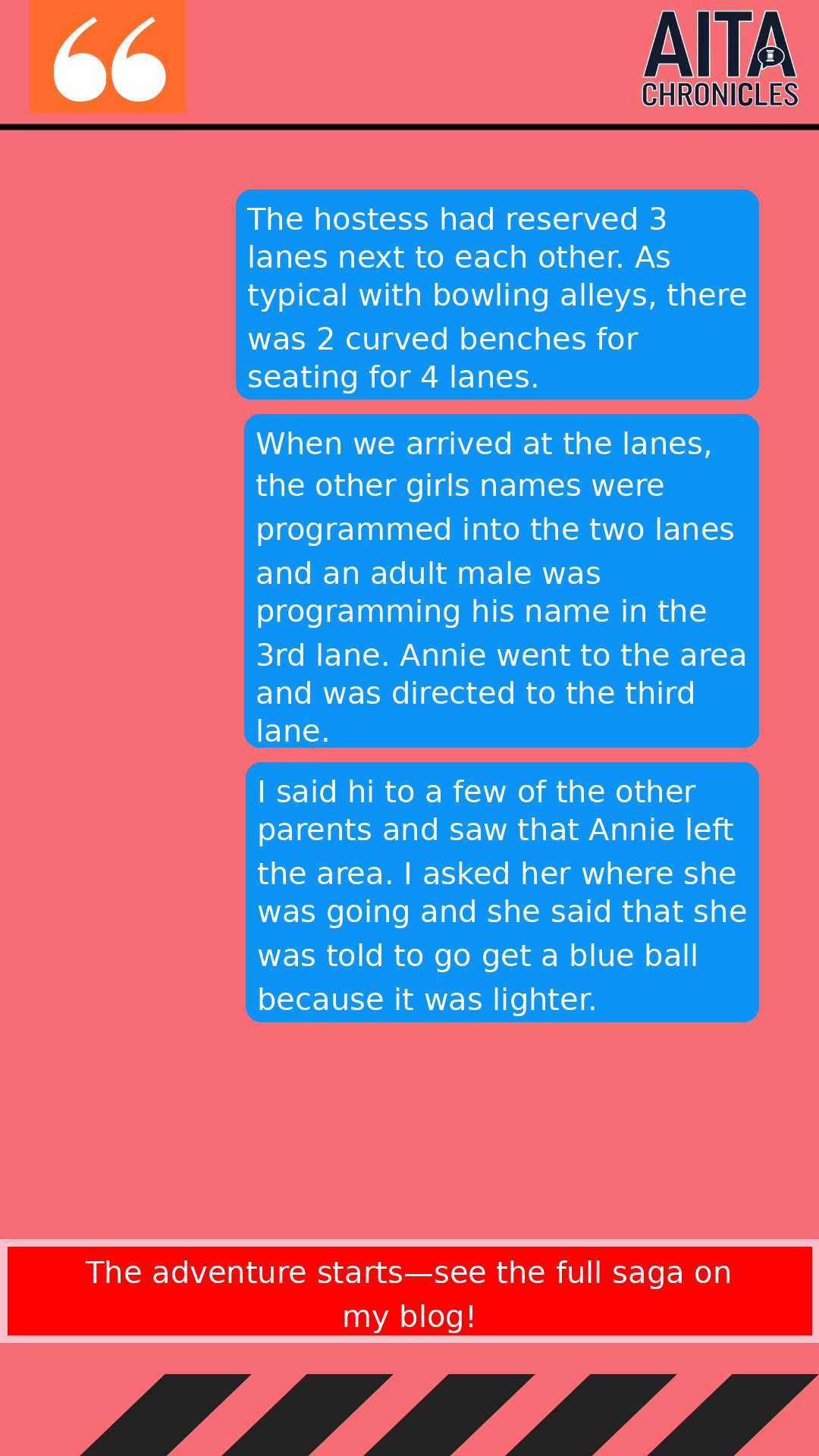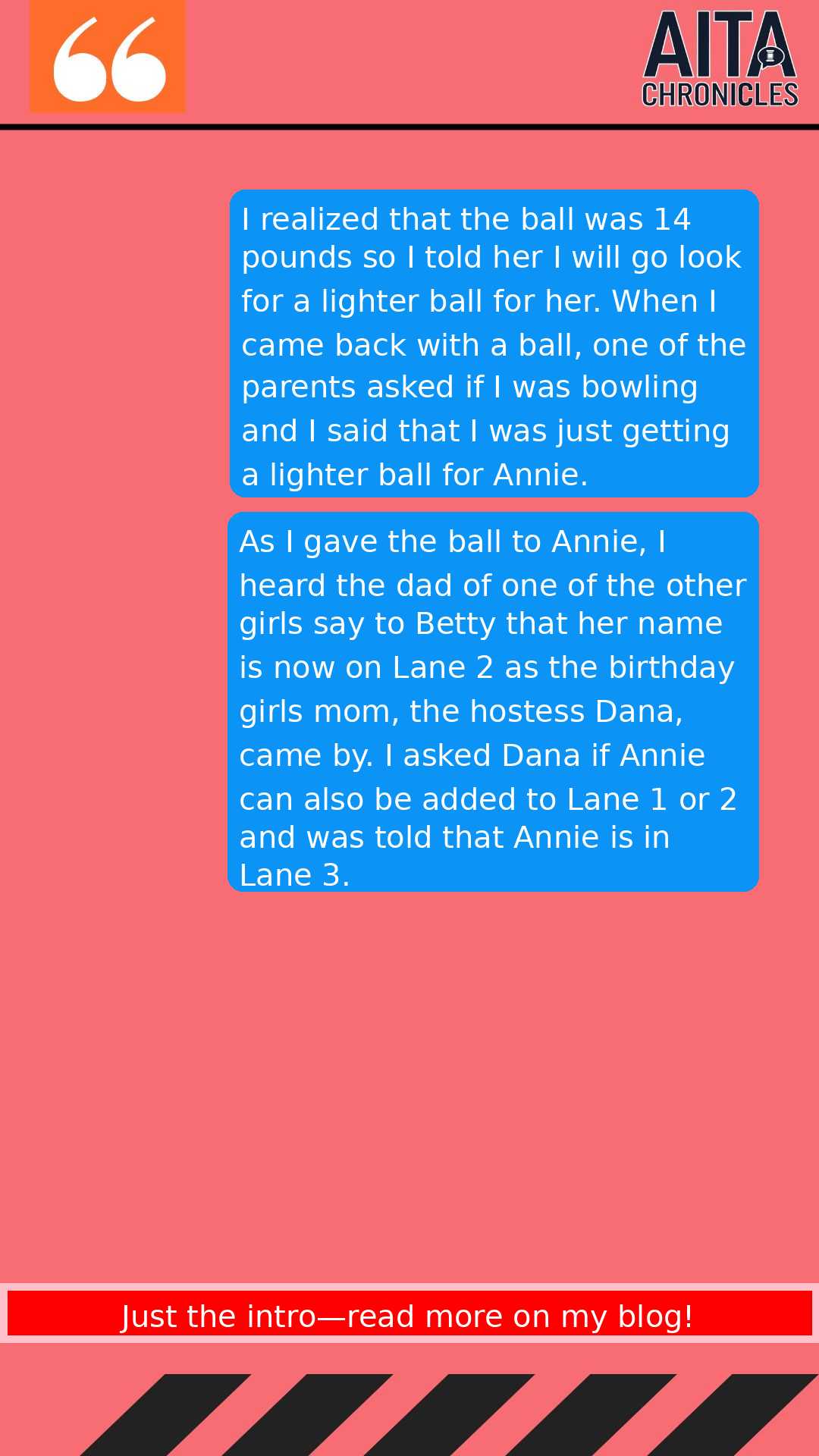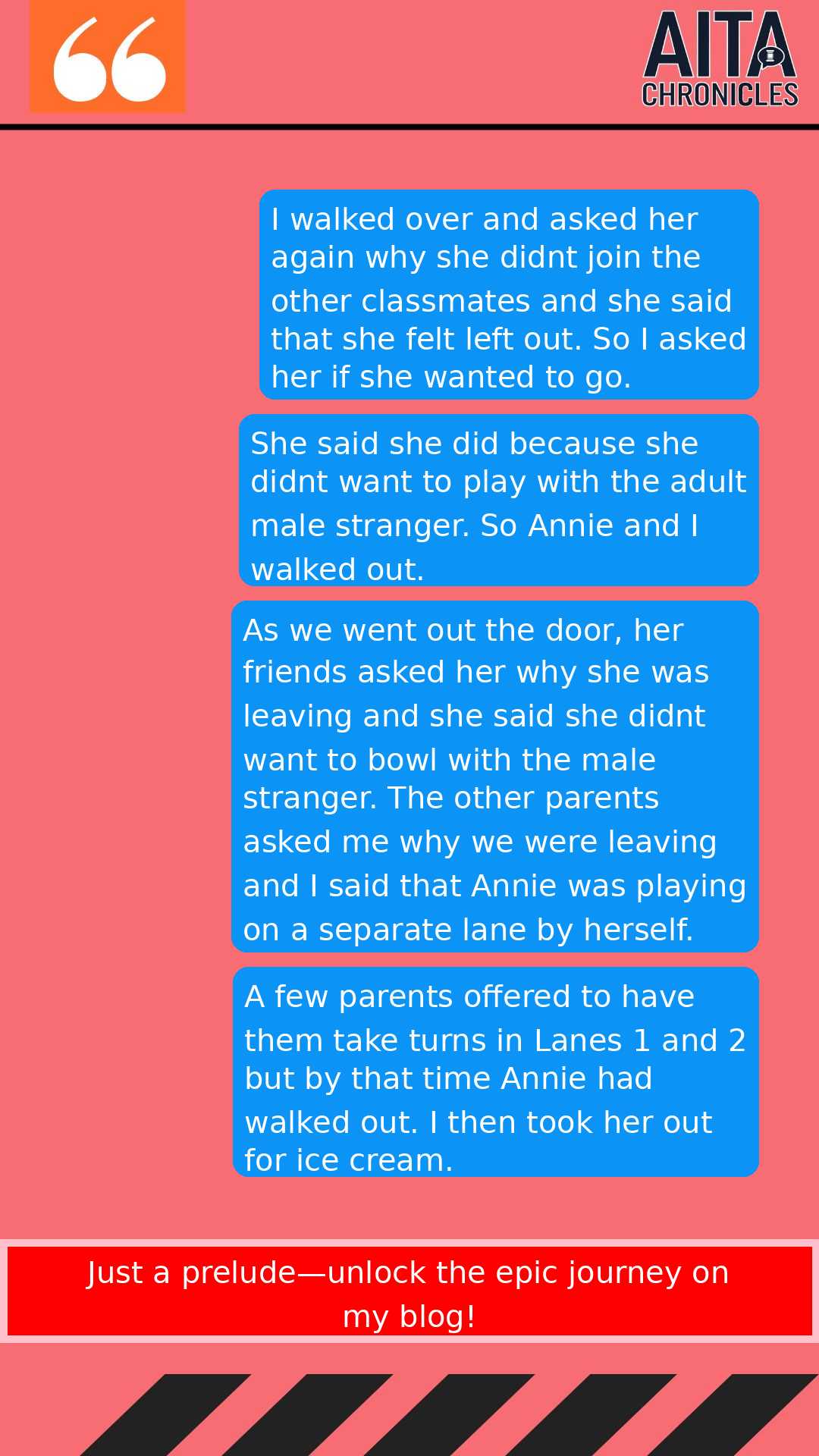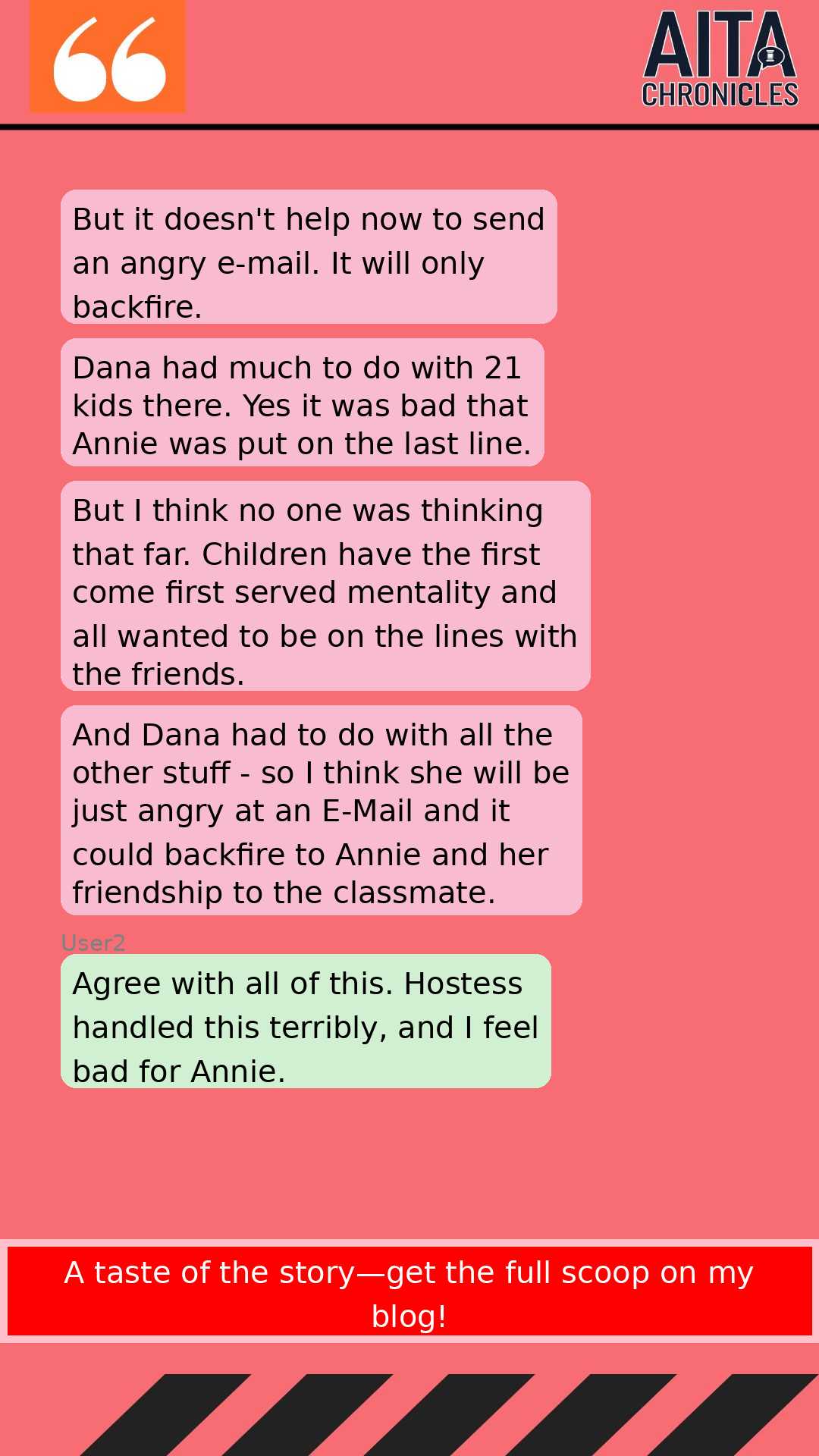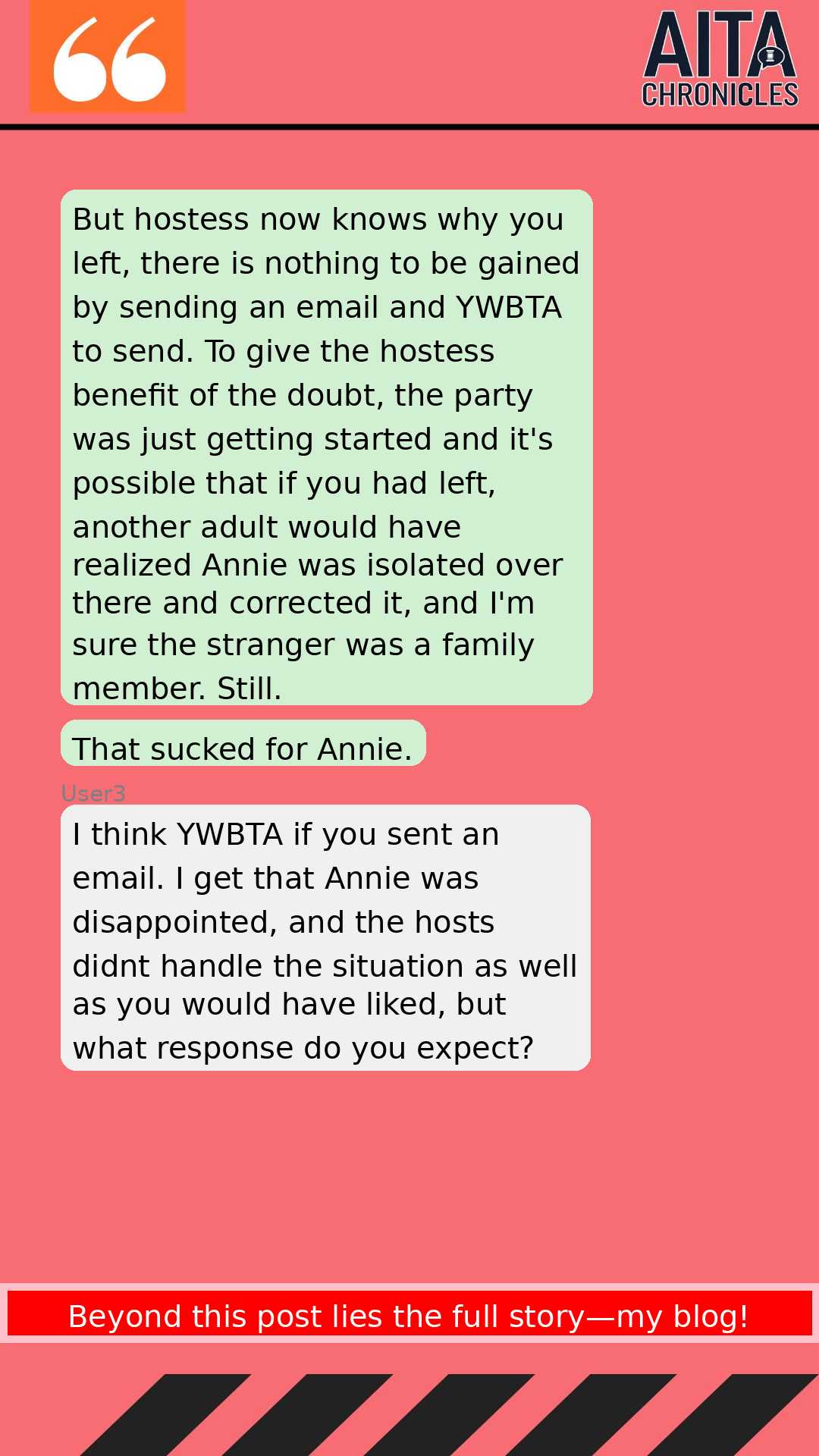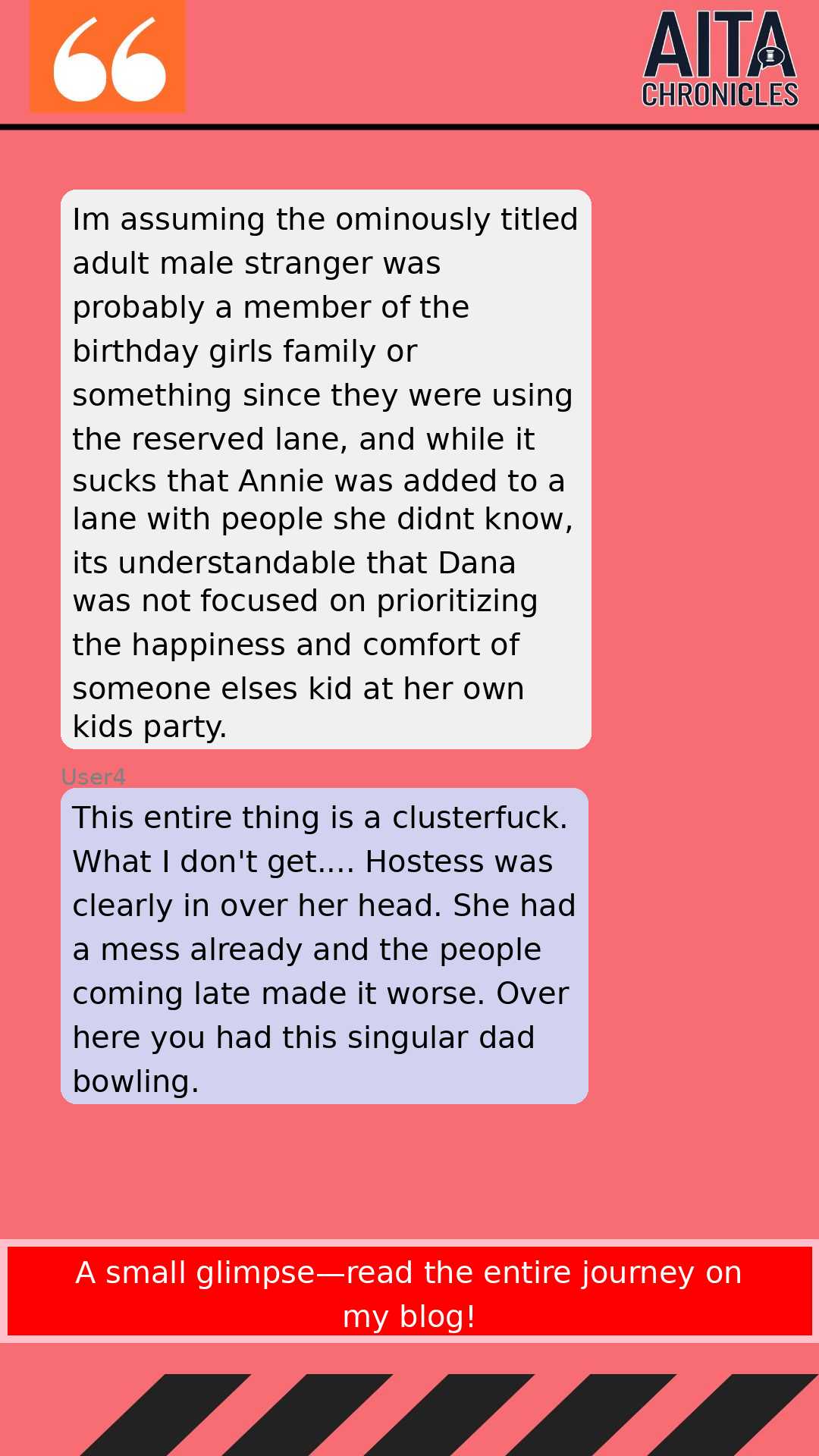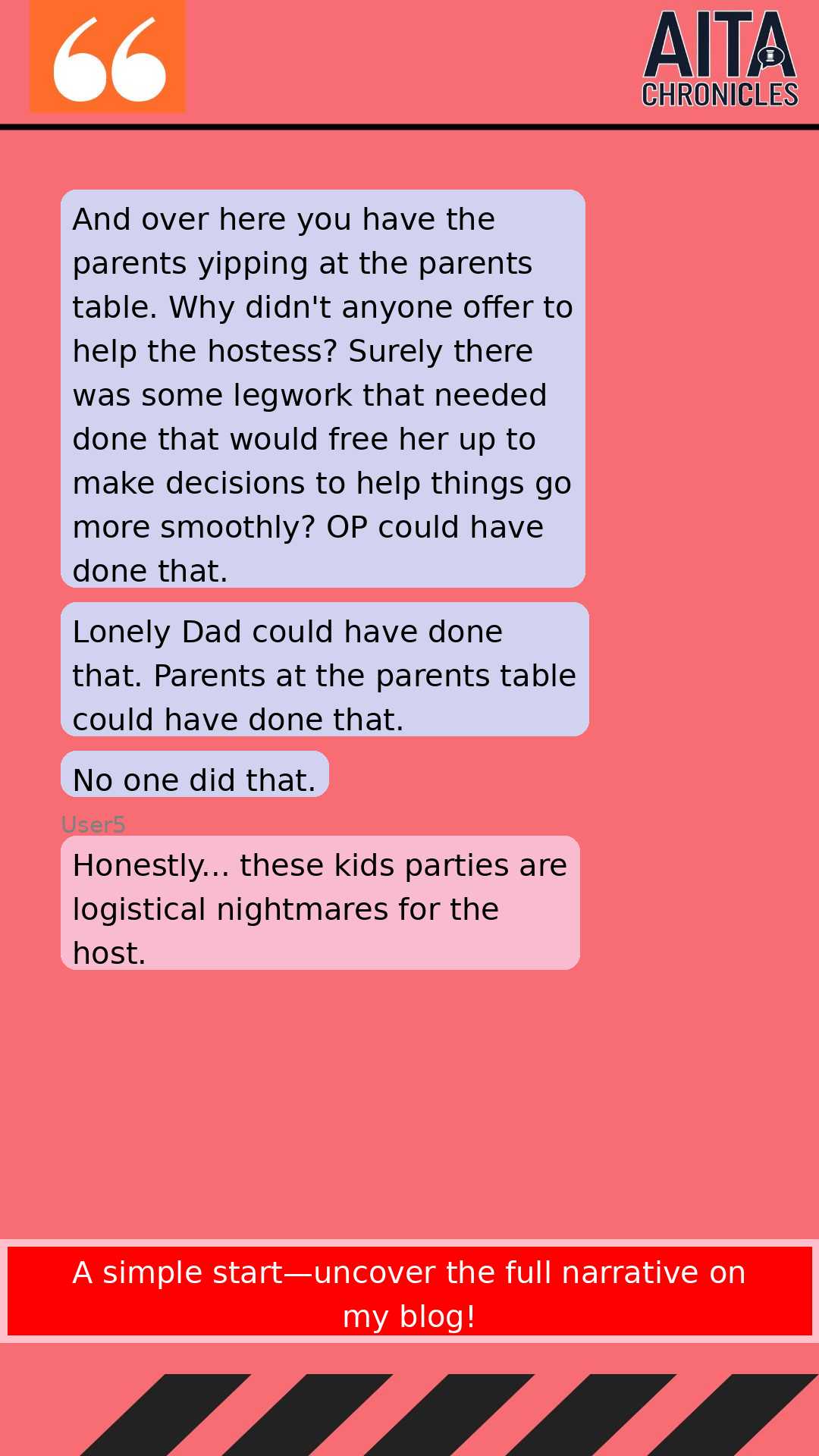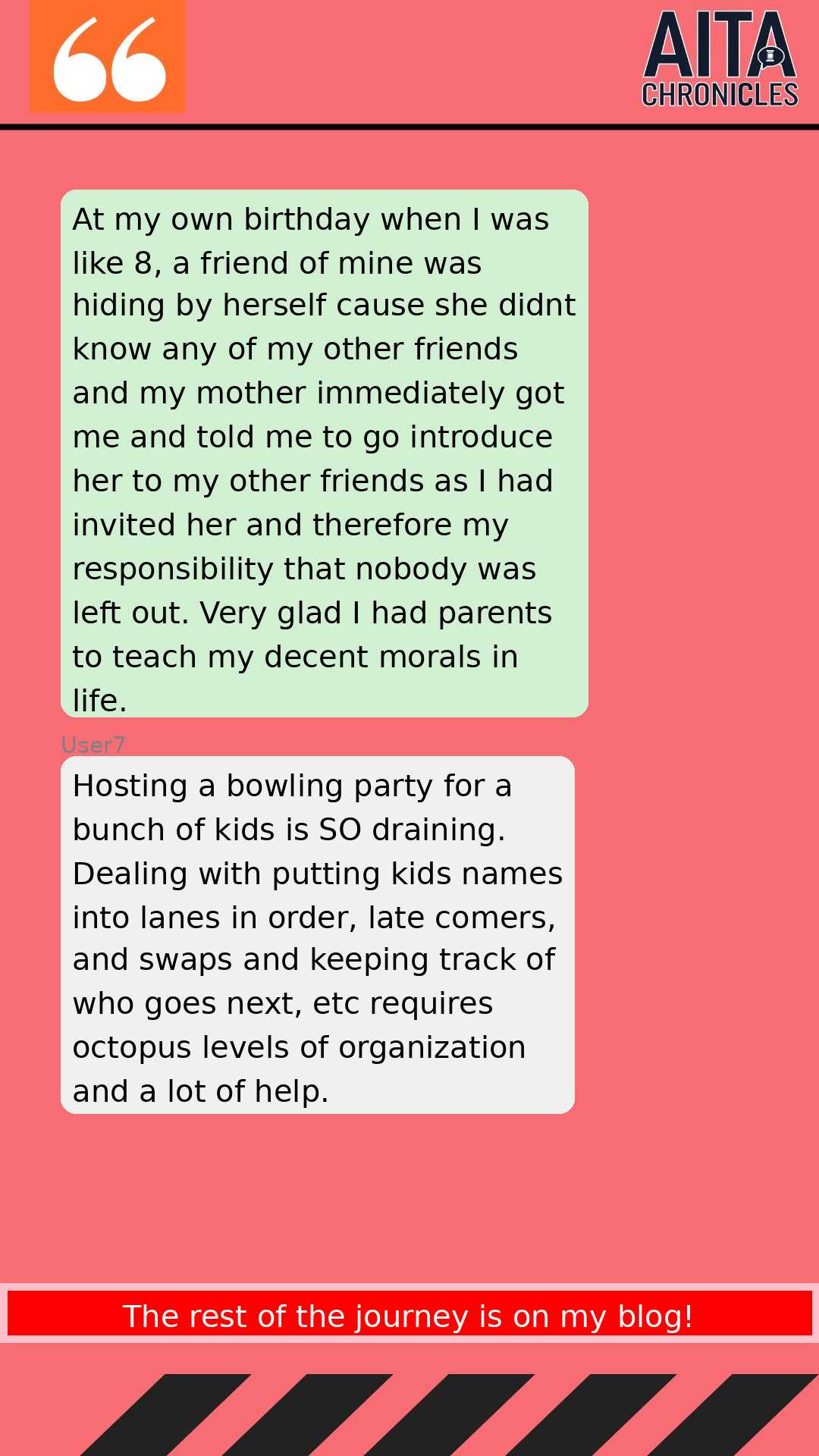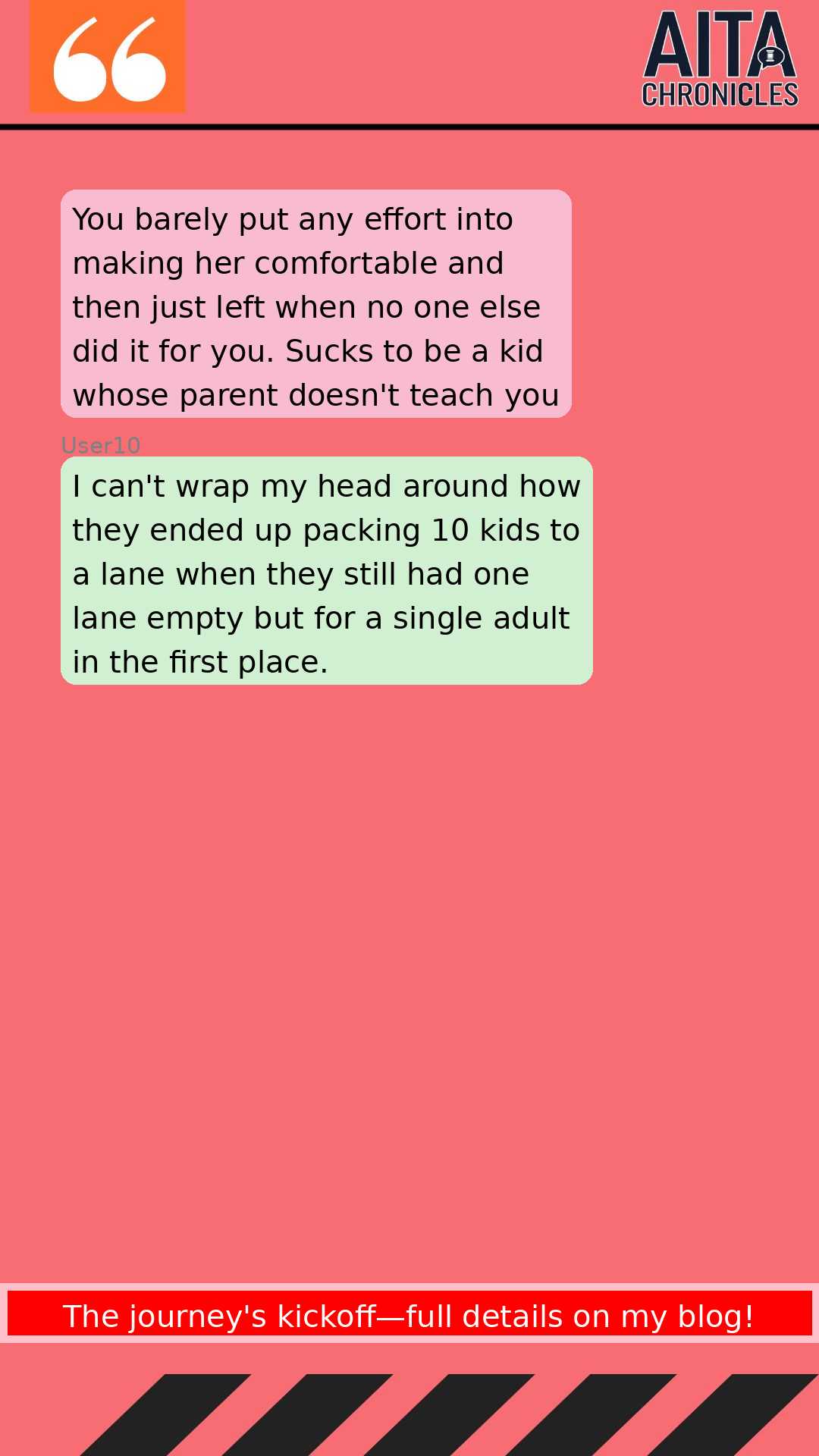WIBTA if I send an email to the bday girl’s mom explaining why my daughter left the party early.
 Image credit: Pixabay (This is example image – Not the actual photo)
Image credit: Pixabay (This is example image – Not the actual photo)
Isolated at a Birthday Bash: A Mother’s Dilemma
When a mother arrives at her daughter’s bowling party, she discovers her 9-year-old is isolated on a lane with an adult male, while her classmates are having fun nearby. Despite her daughter’s discomfort and feelings of exclusion, the mother grapples with whether to confront the party hostess about the situation. This relatable story highlights the challenges parents face in ensuring their children’s safety and social inclusion, raising questions about boundaries and communication in group settings. Will she speak up, or let it go?
Family Drama at the Bowling Alley Birthday Party
A recent birthday party for a classmate at a bowling alley turned into a source of conflict for one mother and her daughter. Here’s a breakdown of the events that unfolded:
- Event Details:
- The party was exclusively for girls, with approximately 21 attendees.
- Mother (43F) and daughter Annie (9F) arrived about 5 minutes late.
- Upon arrival, they noticed that the lanes were already set up with names programmed for the other girls.
- Initial Confusion:
- Annie was directed to Lane 3, where she found herself bowling with an adult male and other unknown children.
- The mother noticed Annie sitting alone and went to check on her.
- Feeling Excluded:
- Annie expressed that she felt left out and uncomfortable bowling with a stranger.
- The mother offered to help Annie join her friends on the other lanes, but Annie preferred to leave.
- Decision to Leave:
- As they exited, Annie explained to her friends that she didn’t want to bowl with the male stranger.
- Other parents inquired about their departure, and the mother explained the situation.
- Despite offers for Annie to join her friends, they had already decided to leave.
- Aftermath:
- The mother took Annie out for ice cream to cheer her up.
- Reflecting on the situation, the mother felt that the hostess’s arrangement was exclusionary.
- She considered sending an email to the hostess to express her concerns about the setup.
The situation highlights the complexities of family drama and conflict resolution in social settings, particularly during events like birthday parties. The mother is left contemplating whether it would be appropriate to address her concerns with the hostess regarding Annie’s experience at the party.
This is Original story from Reddit
 Image credit: Pixabay (This is example image – Not the actual photo)
Image credit: Pixabay (This is example image – Not the actual photo)
Story
My 43F daughter Annie, 9F, was invited to a party at a bowling alley to celebrate a classmate’s birthday. Only girls were invited to the party, and about 21—edit, I think it might have only been 17—were in attendance. We were about 5 minutes late to the party and arrived at the same time as another classmate, Betty.
Due to the long lines, it took Annie and Betty about 10 minutes to get their shoes and walk over to the lanes. The hostess had reserved 3 lanes next to each other. As typical with bowling alleys, there were 2 curved benches for seating for 4 lanes.
When we arrived at the lanes, the other girls’ names were programmed into the two lanes, and an adult male was programming his name in the 3rd lane. Annie went to the area and was directed to the third lane. I said hi to a few of the other parents and saw that Annie left the area.
I asked her where she was going, and she said that she was told to go get a blue ball because it was lighter. I realized that the ball was 14 pounds, so I told her I would go look for a lighter ball for her. When I came back with a ball, one of the parents asked if I was bowling, and I said that I was just getting a lighter ball for Annie.
As I gave the ball to Annie, I heard the dad of one of the other girls say to Betty that her name is now on Lane 2 as the birthday girl’s mom, the hostess Dana, came by. I asked Dana if Annie could also be added to Lane 1 or 2 and was told that Annie is in Lane 3. I was surprised and walked over to Lane 3 to see that Annie was added to Lane 3, and the only player on Lane 3 was Annie playing with the adult male, who we didn’t know, along with a bunch of other players named Kid 1, Kid 2, and Kid 3.
I then saw Annie sitting by herself. I asked her if she wanted to go to the other bench to join her friends, but she said she was on Lane 3 and was waiting her turn to bowl, though the adult male was bowling for the other kids. I let her be and went back to talk to some of the parents, but 5 minutes later, I realized she was still sitting alone on the bench rather than joining her classmates on the other bench for Lanes 1 and 2.
I walked over and asked her again why she didn’t join the other classmates, and she said that she felt left out. So I asked her if she wanted to go. She said she did because she didn’t want to play with the adult male stranger.
So Annie and I walked out. As we went out the door, her friends asked her why she was leaving, and she said she didn’t want to bowl with the male stranger. The other parents asked me why we were leaving, and I said that Annie was playing on a separate lane by herself.
A few parents offered to have them take turns in Lanes 1 and 2, but by that time, Annie had walked out. I then took her out for ice cream. After we left, I realized I could have asked Dana to divide the girls evenly into 3 lanes, but by that time, we had already left.
I’m really upset about how the hostess thought it was okay to isolate Annie, and I’m glad I didn’t just drop her off and leave. WIBTA if I sent the hostess an email explaining why we left early and how the setup was exclusionary, and that it was improper to have my daughter bowl with an adult male stranger instead of her classmates?
View the Original Reddit Post Here
Summary of Reddit Comments
The top Reddit comments indicate a general agreement that while the situation was unfortunate for Annie, sending an angry email to the hostess would not be constructive. Many users empathize with the hostess, acknowledging the challenges of managing a children’s party and suggesting that the OP could have taken a more proactive approach during the event. Overall, the comments emphasize the importance of communication and support in such chaotic environments.
Verdict: NTA
Expert Advice for Resolving the Conflict
In situations like the one described, it’s essential to approach the conflict with empathy and understanding for both the mother and the hostess. Here are some practical steps to consider for resolving the situation and improving future interactions:
For the Mother
- Reflect on the Experience: Take some time to understand Annie’s feelings and validate her emotions. It’s important to acknowledge her discomfort while also considering the broader context of the party.
- Communicate Openly: If you feel compelled to reach out to the hostess, frame your message in a constructive way. Instead of expressing anger, share your experience and suggest ways to improve future events. For example, you could say, “I noticed that Annie felt uncomfortable at the party, and I thought it might help to have clearer lane assignments for guests.” This approach fosters collaboration rather than confrontation.
- Encourage Social Skills: Use this experience as an opportunity to teach Annie about navigating social situations. Discuss how she might express her feelings in the moment and explore ways to engage with new people, even if they seem unfamiliar.
- Plan Future Activities: Consider organizing playdates or activities with Annie’s friends outside of structured events. This can help her build confidence in social settings and strengthen her friendships.
For the Hostess
- Seek Feedback: After the party, consider reaching out to parents for feedback. This can help you understand how to improve future events and ensure that all children feel included and comfortable.
- Clarify Arrangements: For future parties, provide clear instructions about lane assignments and the presence of adults. This can help parents feel more secure about their children’s participation and alleviate any concerns about safety and comfort.
- Encourage Inclusivity: Consider implementing a buddy system or assigning groups in advance to ensure that children are paired with friends or familiar faces. This can help reduce feelings of exclusion and enhance the overall experience.
Conclusion
Conflict in social settings, especially involving children, can be challenging. By fostering open communication and understanding, both the mother and the hostess can work towards a resolution that benefits everyone involved. Remember, the goal is to create a supportive environment where children can enjoy their time together while feeling safe and included.
Join the Discussion
 Image credit: Pixabay (This is example image – Not the actual photo)
Image credit: Pixabay (This is example image – Not the actual photo)
What do you think? Would you have handled this differently?
Share your thoughts below! Vote: Do you agree with Reddit’s verdict?
